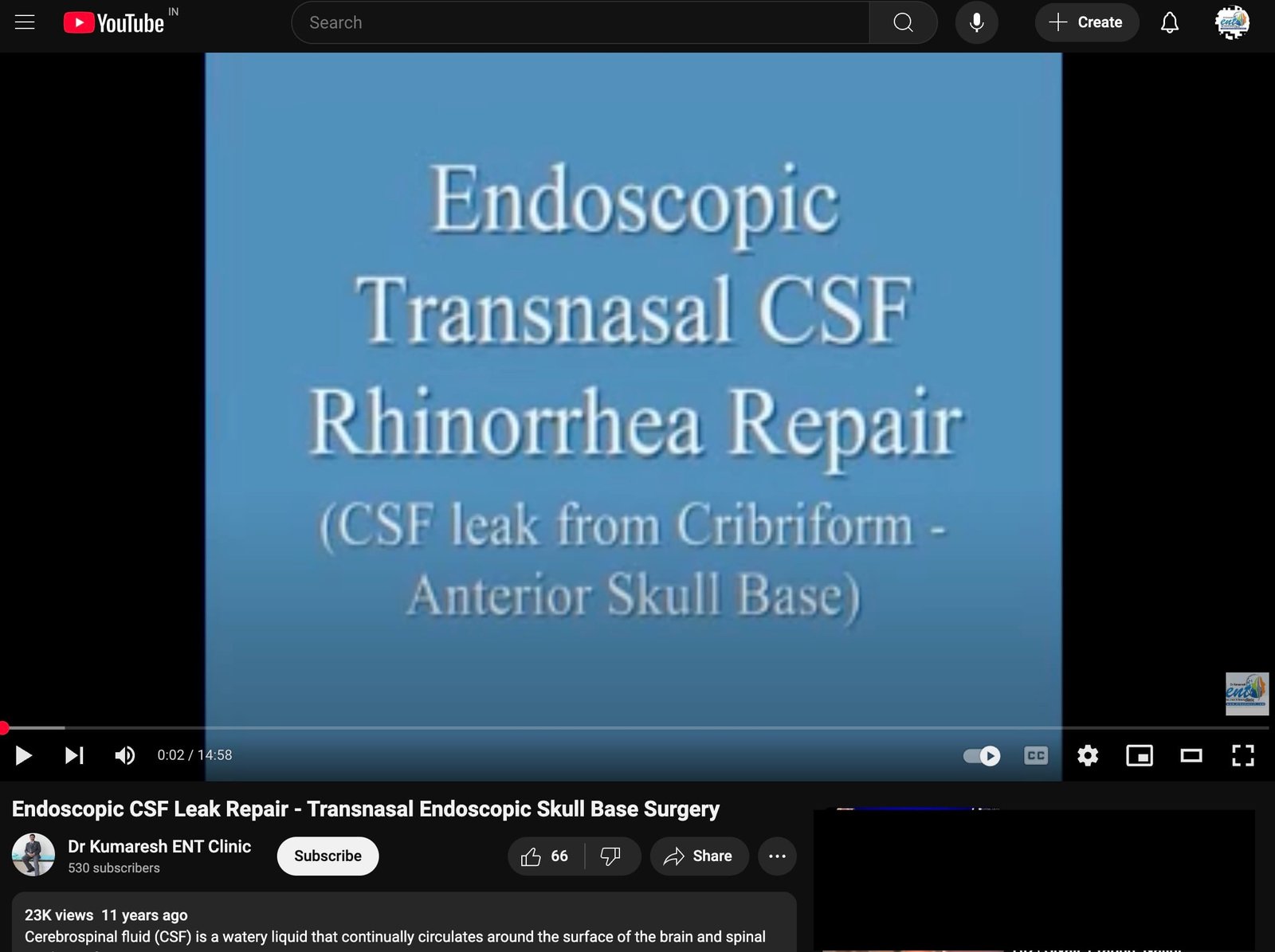CSF Leak: More Than Just a Runny Nose
A persistent runny nose may seem harmless, but in some cases, it could be a sign of something far more serious—a Cerebrospinal Fluid (CSF) Leak. Often mistaken for simple rhinorrhea due to allergies or sinus infections, a CSF leak requires prompt diagnosis and specialized treatment.
Symptoms of CSF Leak
A CSF leak occurs when the protective fluid surrounding the brain escapes through a small defect in the skull base, usually into the nasal cavity. Common symptoms include:
- Clear, watery nasal discharge, often from one nostril
- Drainage that increases when leaning forward or straining (known as the “stress test”)
- Frequent headaches, sometimes positional in nature
- Metallic taste in the mouth
- Risk of meningitis due to the direct connection between the brain and nasal cavity
Why CSF Leak is Misdiagnosed
Many patients suffering from a CSF leak are initially misdiagnosed with chronic allergies, sinusitis, or non-specific rhinorrhea. Since the leakage resembles normal nasal discharge, it is often dismissed—delaying proper treatment and increasing the risk of complications.
A simple yet effective stress test can provide a clue: if nasal discharge worsens with activities like coughing, bending over, or straining, it may indicate a CSF leak rather than routine nasal drainage.
Advanced Diagnostic Approach
To confirm a suspected CSF leak, I use a combination of:
- Beta-2 transferrin test – A highly specific marker found only in CSF.
- CT cisternogram – A specialized imaging technique that helps locate the exact site of the leak by tracking contrast dye within the cerebrospinal fluid.
- MRI with contrast – Useful for detecting associated brain herniation or soft tissue abnormalities.
Endoscopic CSF Leak Repair: A Minimally Invasive Solution
Once diagnosed, the best course of action is an endoscopic CSF leak repair, a cutting-edge procedure that provides high success rates with minimal recovery time.
Procedure Highlights:
- Performed using a nasal endoscope, avoiding the need for external incisions.
- Small defects in the skull base are identified and sealed using autologous tissue (e.g., fascia, fat, or mucosal grafts).
- Advanced sealing techniques, such as fibrin glue, enhance long-term success.
- Most patients recover quickly with minimal discomfort.
Watch the Procedure
I have successfully treated multiple CSF leak cases using this technique. You can watch the entire procedure here: CSF Leak Endoscopic Repair – Dr. Kumaresh
Conclusion
A CSF leak is more than just a runny nose—it is a condition that demands precise diagnosis and expert management.
Timely intervention not only restores quality of life but also prevents serious complications like meningitis. Endoscopic repair offers a safe, effective, and minimally invasive solution to close the leak and restore normal function.
If you have any concerns or wish to schedule a consultation, feel free to reach out.


Recent Comments